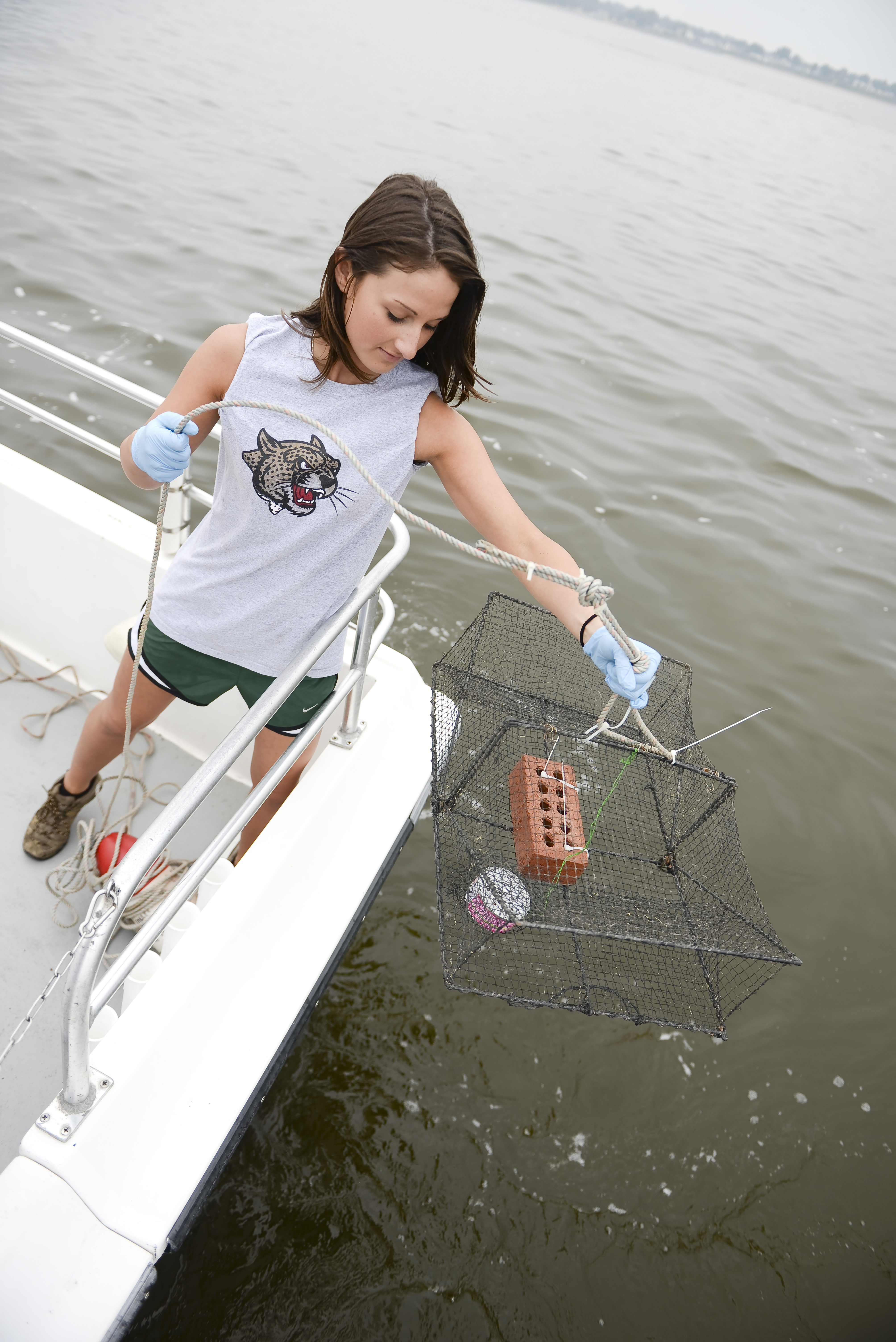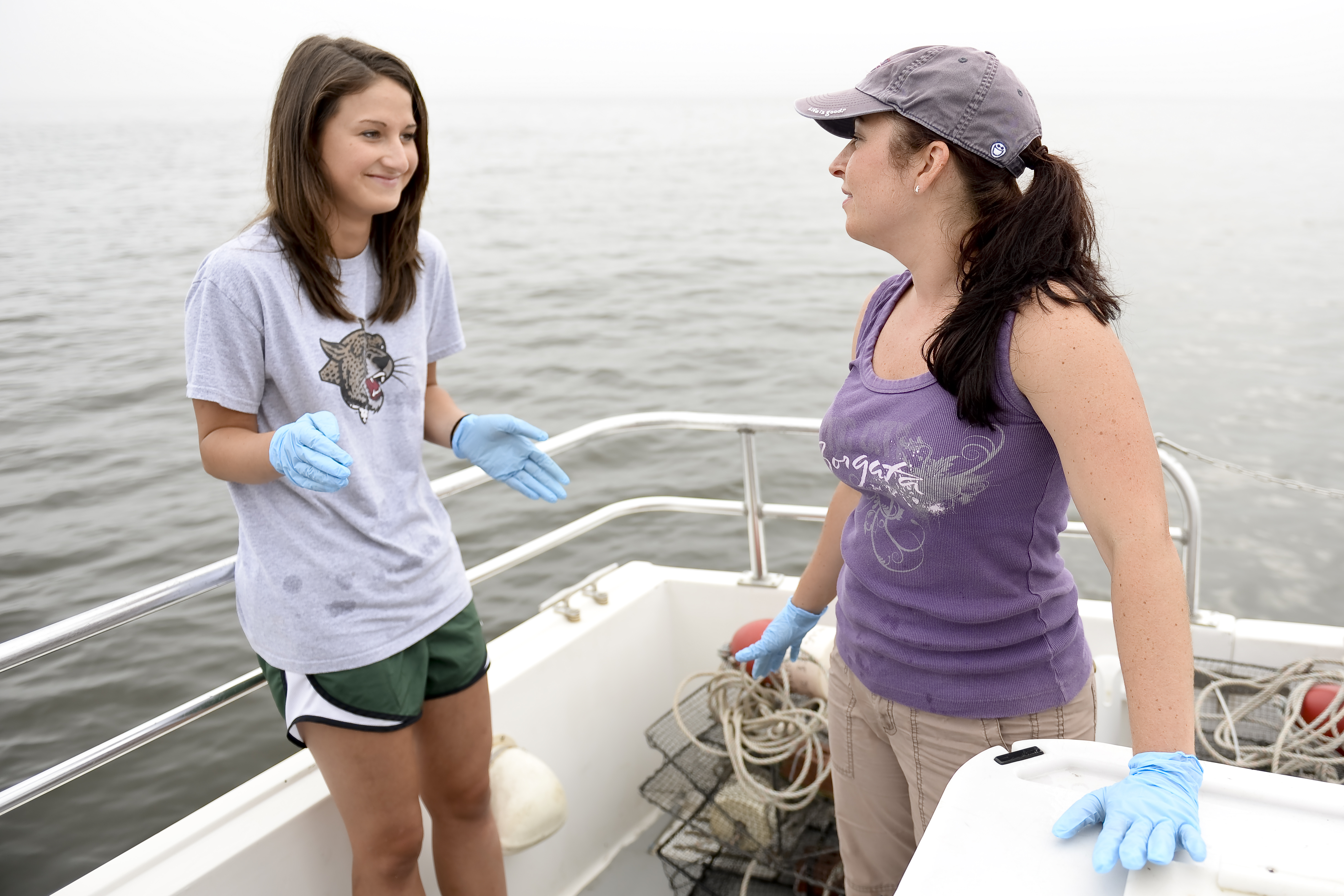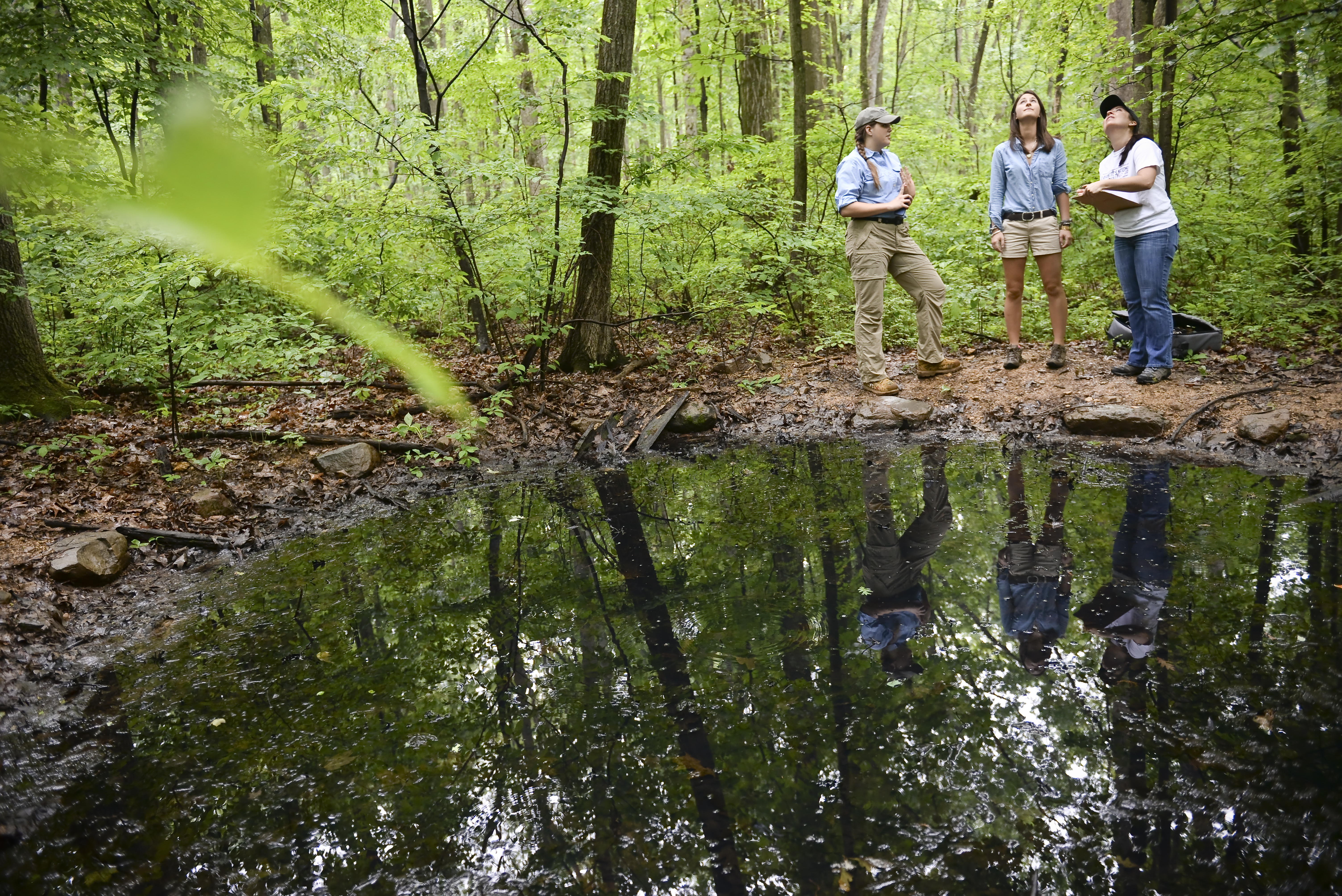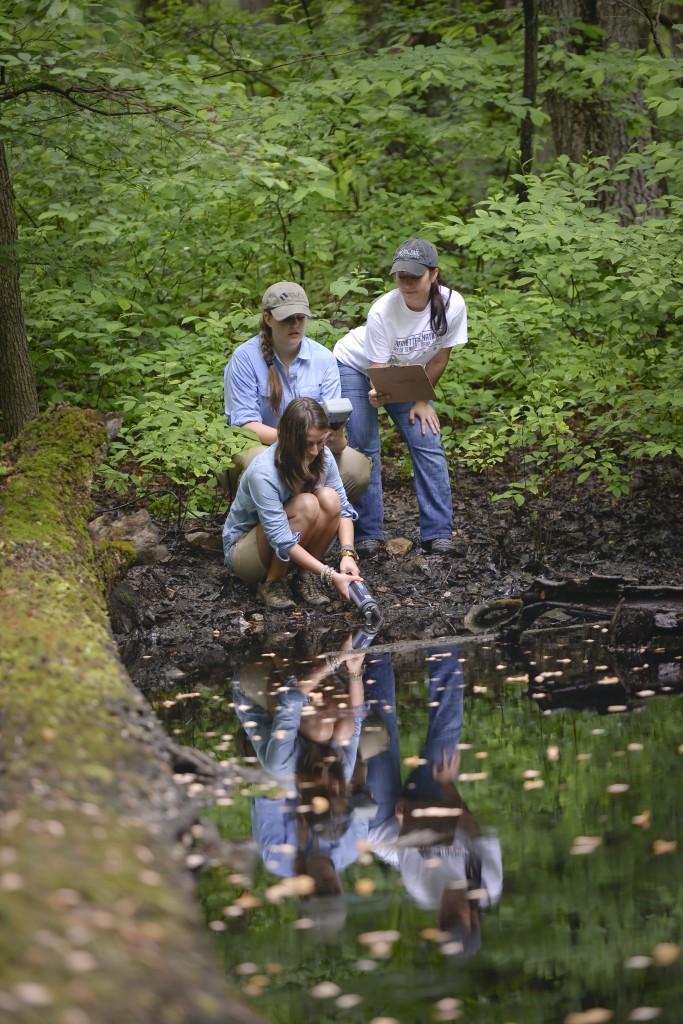Over the past 10 weeks, my summer Excel and Nalven scholars have been busy working on some exciting research projects.
Sarah Woodruff ’15 is a B.S. Biology major with a strong interest in the social sciences. She will be combining her interests in the natural and social sciences for her Honors Thesis project entitled: “Abundance, distribution, and social perceptions of two non-native crab species in the Raritan Bay System: an interdisciplinary approach to bioinvasion.” She will be not only studying the distribution of these invasive crabs, and their impact on native species, but also conducting interviews with local fishermen to assess their awareness of the problem. This aspect of her research is unique because few studies involving biological invasions delve into social perceptions of the invasive species in question. Sarah believes this is a serious oversight because humans are a critical component of food webs in most ecosystems and because the economic impacts of invasive species greatly affect the livelihood of local people. The more people are affected by an invasive species, the more they will favor management of that species. Therefore, in order to come up with a management plan for any invasive population, social perception of the biological invasion must be assessed and considered.
Katie Engberg ’15 is a B.S. Biology major interested in conservation science. As a result, Katie has decided to investigate “The Effect of Road Proximity on Abundance and Movement Patterns of Vernal Pool-Dependent Wood Frogs in Jacobsburg State Park.” Amphibians are the most threatened group of vertebrates, with about 40% at risk of extinction. Habitat loss is one of the main threats to amphibians, and of the amphibian species that populate Northeastern North America, approximately 45% rely on vernal pools as their primary breeding habitat. Katie wonders how the proximity of roads impacts water quality and amphibian abundance in these very important habitats. She has been collecting data on hydroperiod, water chemistry, egg masses, and adult frogs at 5 vernal pools within Jacobsburg State Park – 3 isolated pools and 2 near a road.
She hypothesizes that the isolated pools and pools near roads will differ in both abiotic factors and in wood frog abundance. She also hypothesizes that wood frogs will be more abundant in the isolated pools that are free from the factors that could diminish wood frog numbers, such as road mortality and habitat fragmentation. She expects that this abundance will be shown in both their egg mass numbers and numbers of captured adult wood frogs during the upland movement monitoring.
She’s only begun to collect her data, but we will keep you all posted!




